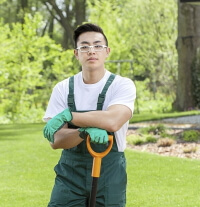As compared to other warm-season grasses, St. Augustine runners spread relatively fast.
Here are some quick tips on how to make St. Augustine grass grow even faster and grow thick:
- Use the right kind of soil (sandy).
- Maintain your St. Augustine grass properly: water consistently, collect lawn clippings, and mowe it regularly. Maintain the height up to 3.5-4 inches tall.
- Plant St. Augustine grass in mid-summer.
- Apply nitrogen fertilizer.
- Use appropriate plug methods.
St. Augustine grass spreads in the span of 6 months up to a year, depending on your care, installation methods, and overall lawn condition. In this article, we will discuss how to do each step properly.
Does St. Augustine Grass Spread or Not?
Yes, St. Augustine grass spreads. Among other types of warm-season grass, the St. Augustine growth is known to be the fastest.
Even if it’s not filled in yet, the grass still spreads at a normal rate. This is why many people enjoy taking care of a St. Augustine lawn.
4 Ways in Making St. Augustine Grass Spread Faster
Okay. So we now know St. Augustine grass spread fast. But what if we tell you that it’s possible to make it spread even faster with these methods?
1. Use the Right Soil
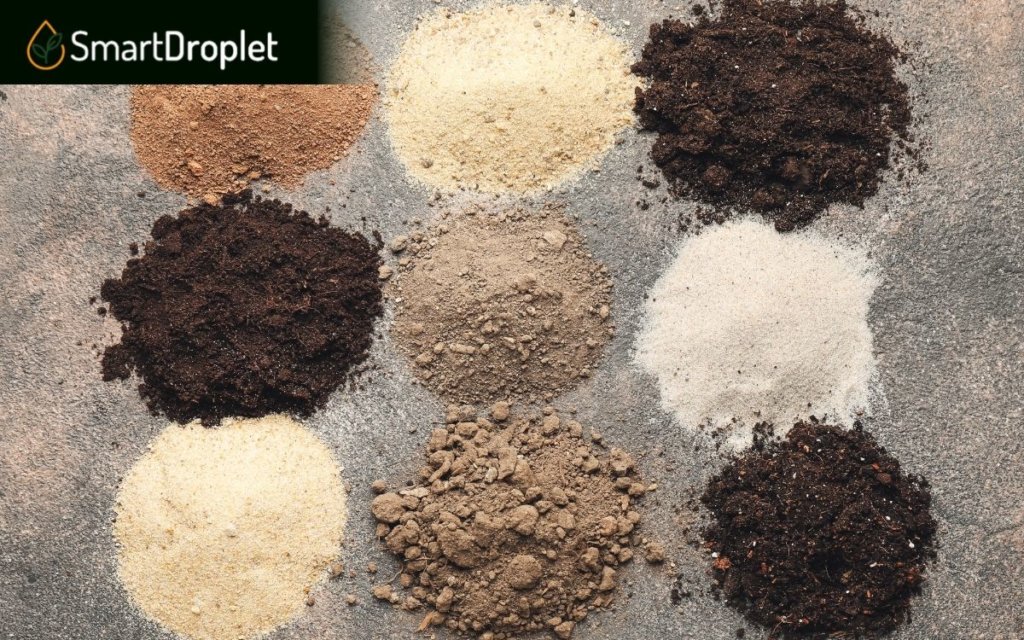
The secret to healthy root development will always be good soil. Whether or not we’re talking about St. Augustine grass, we know that soils are crucial in growing healthy plants.
We suggest laying the right soil before everything else.
For St. Augustine grass, DO NOT use waterlogged soil or compacted clay soils. These hinder the oxygen supply underground, which in turn affects grass growth.
They also cause water pooling that leads to thin or sparse grass spread.
If the problem is uneven grounds or bare spots, use topsoil. The overall best choice is sandy soil with a pH range of 5 to 8.5. Don’t worry about it being slightly acidic, as this can speed up the growth.
- Use Scott’s Turf Builder Lawn Soil to give your grass the essential nutrients it may be missing!
- You will receive 2 bags with your order
- Supports a strong root system
- Essential nutrients for early grass development
- Grows new grass 50% thicker
- Premium soil ingredients
For lawn owners looking for a top-dressing, sandy loam soil is the way to go. St. Augustine grass grows better on a dry, sandy texture.
If you’re unsure of which soil type can make your St. Augustine grass lawn grow faster, you can always consult professionals or purchase self-conducting test kits to find out!
2. Follow the Maintenance Schedule
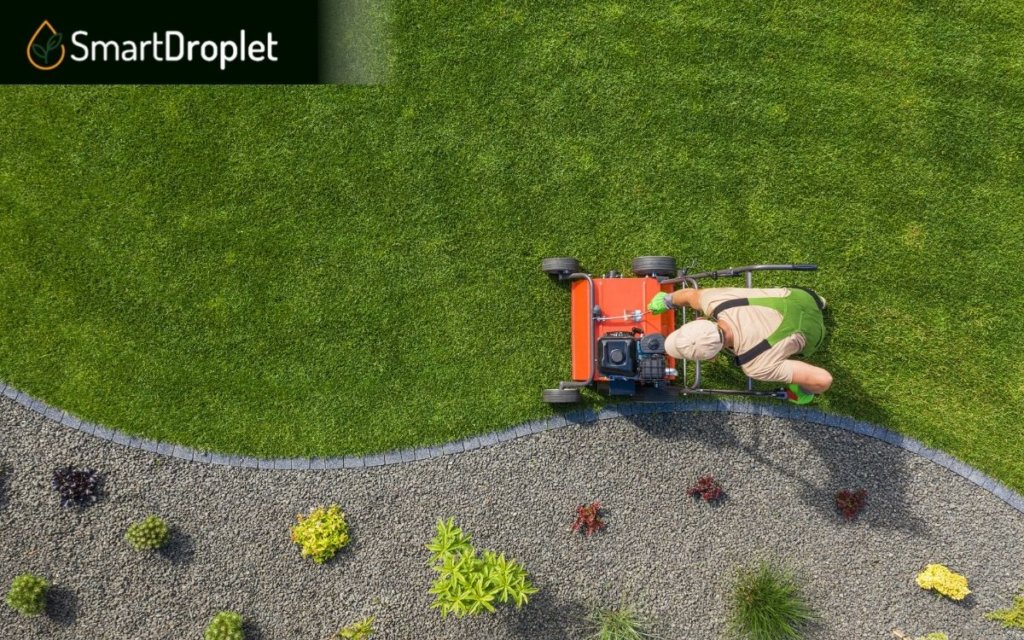
For your St. Augustine lawn to grow faster, it needs proper lawn care. This includes keeping up with the necessary maintenance.
Make sure that you’re watering consistently, collecting lawn clippings, and mowing them regularly. And speaking of mowing, maintain the height up to 3.5-4 inches tall.
Of course, we can’t forget fertilizing. Fertilizers are essential in speeding up the growth of St. Augustine grass.
For the first months of your established lawn, we suggest using a phosphorus-laden fertilizer. Afterward, use any nitrogen-rich fertilizer.
Additionally, part of maintenance is watering the St. Augustine grass.
- Lesco Professional, 50 LB, 13,00 SQFT, 17-0-17 St Augustine Turf Fertilizer
- 30% Poly Coated Sulfur Coated Urea, Specially For St. Augustine Grass
- Its very easy and elegant to use
Do it multiple times a day at first, stick with at least half an inch of water in irrigating your St. Augustine grass plugs or sods after the second week.
In the long run, approximately around the sixth to seventh week, cut down on your watering frequency and find the right balance.
Avoid overwatering the grass as this can do more harm than good. See what your St. Augustine lawns like by observing them.
3. Planting St. Augustine Grass During the Summer
As we’ve already established, St. Augustine is a warm-season turfgrass. Naturally, its peak season is during the summer. They are dormant during fall and winter.
If you want to make St. Augustine grass grow rapidly, choose mid-summer as the perfect time to start.
4. Control and Kill Weeds Properly
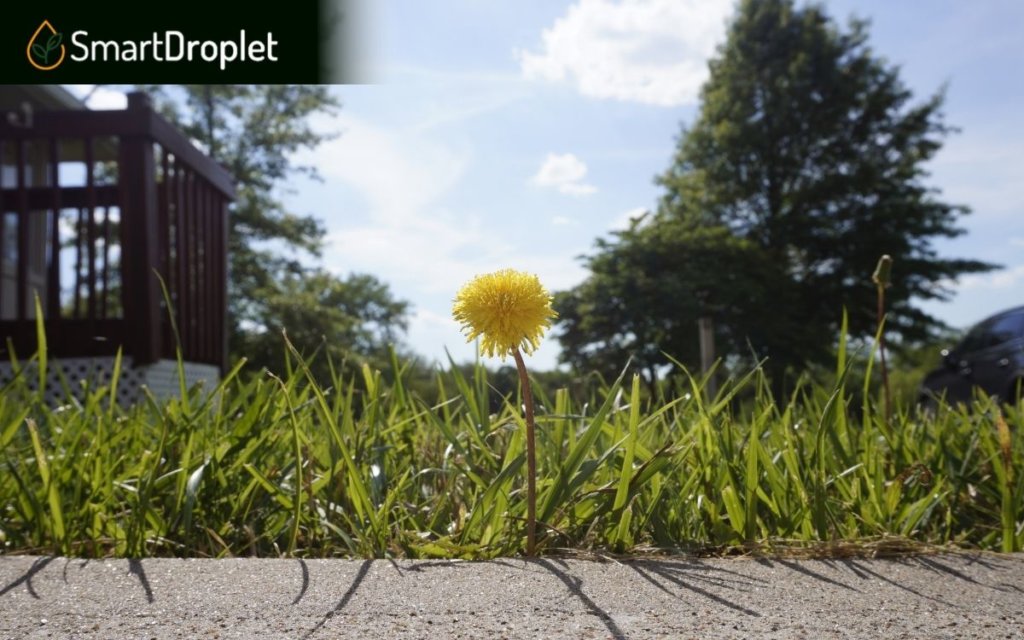
Concerning lawn care, controlling weeds gives way to your St. Augustine grass to grow. Weeds will only consume the nutrients meant for the St. Augustine grass, so getting rid of them is key to a nice, thick lawn.
The top enemies of St. Augustine grass are crabgrass and broadleaf weeds.
We would suggest using weed killers for an efficient job, but do not use overly strong herbicides, especially in warmer climates.
How Long Before St. Augustine Plugs Spread?
St. Augustine grass plugs take up to two weeks or 7-14 days to fully spread.
We know, it seems like a long time. But the St. Augustine grass plugs need time to settle and establish their roots. Don’t worry; once it starts, it grows fast.
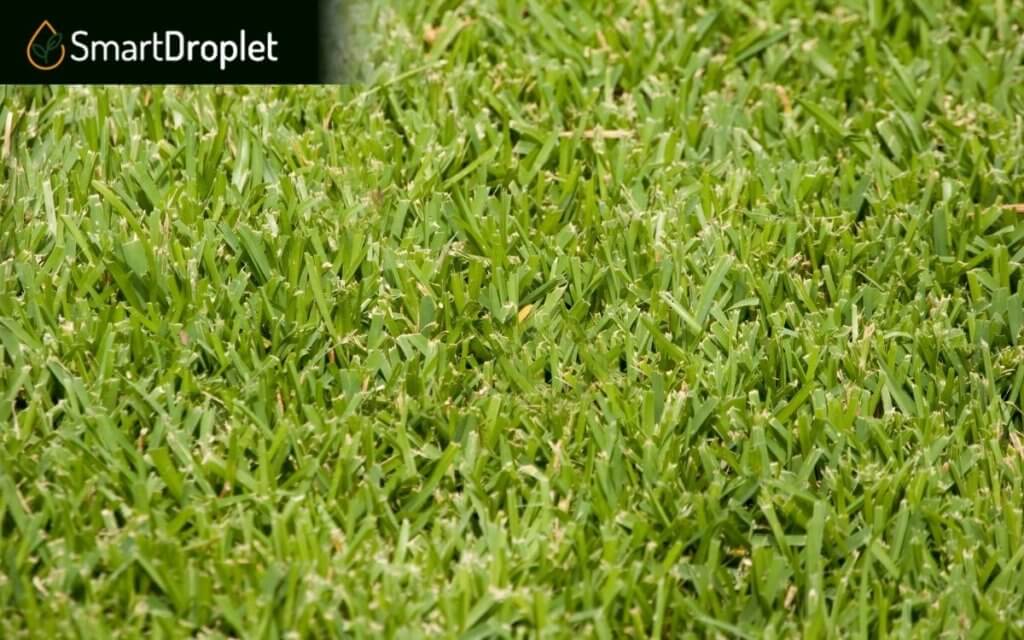
But note that depending on bare spots and space, the growth rate will still differ from one case to another. There are various ways to install plugs to make St. Augustine grass grow fast.
Here are some examples.
High-Density Plug Installation
You will need around 6-11 inches of space for this method.
Since it’s high-density, the roots need enough space to grow and develop.
Once the roots receive the nutrients they need, expect the St. Augustine grass to spread even quicker. This method takes about 6-8 months before achieving a fully lush lawn.
Typical Density Plug Installation
The following method demands 12-18 inches of space, so the fill-in process will be a lot slower.
It will take around 8-10 months for the St. Augustine grass to fully spread.
But why do some people choose the typical density installation method? Because it’s more affordable and cost-effective.
If you’re not in a rush for green lawns, this method will be more than sufficient.
Low-Density Plug Installation
Last but not least, the low-density plug method needs 13-24 inches of space. A regular-sized lawn will take around a year or more to achieve a full St. Augustine grass spread.
Do You Buy St. Augustine Grass Seed?
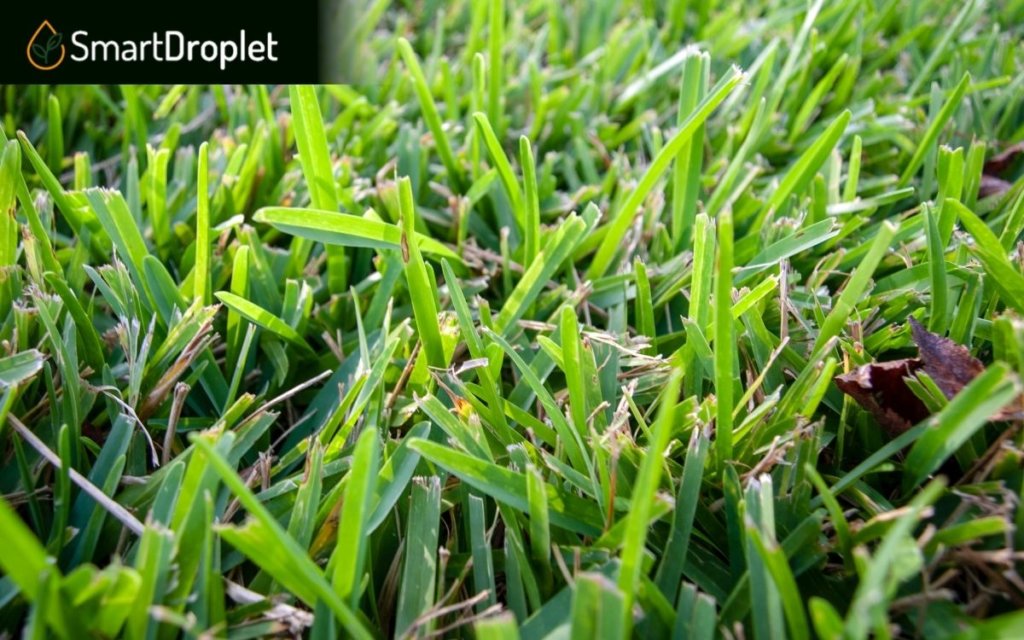
No, you don’t buy St. Augustine grass seeds because they don’t typically come in this form. They are often sold as plugs or sods that you fill in your St. Augustine lawn.
The only downside with plugs is that the growth rate is slow for newly installed Augustine grass. St. Augustine grass, however, grows a lot faster once it’s settled.
So, don’t fret! Patience is key.
Conclusion
You can make your St. Augustine lawn grow faster than its natural speed, but it requires responsibility and patience.
Like most plants, you’d need the correct methods and maintenance to ensure their healthy growth. It’s no different with a lawn! We hope we’re able to help you understand your lawn better.
Frequently Asked Questions [FAQs]
This section will address some of the FAQs that we’ve encountered regarding the topic.
What Slows Down the Growth of St. Augustine Grass?
First, assess if you’re following the proper maintenance routine for your lawn. Your St. Augustine grass might not be receiving the care it needs.
But if you’re sure that this isn’t the problem, there are also other common factors to consider.
Weeds
As we have mentioned above, weeds compete against your desired grass and consume the nutrients meant for the latter.
They also take up the space that the St. Augustine grass can otherwise occupy.
There are herbicides and weed killers that can help get rid of weeds.
But if you’re after green growth, there are always natural remedies that won’t be too harmful to your other crops and the environment in general.
Grey Leaf Spots
These are easily identifiable by grey spots on the leaf blades. It’s a fungus that sucks on moisture, and they’re common in hot and moist climates like Florida.
If you see a small grey spot, immediately take action as this can spread to other parts of the blade.
To avoid this, don’t overwater your leaves. This is why we suggest minimizing the irrigation frequency in the long run.
Southern Chinch Bugs
These pests love St. Augustine grass because of its warm and moist characteristics – closely similar to the habitat of chinch bugs.
Their presence is easy to spot as they look like normal bugs. But if they’re not around, the best way to spot their activity is by observing the grass.
If you see damages as if the leaves have been dried up (and you’re sure it’s not dehydrated), that’s most likely a chinch bug’s doing.
To control, start by throwing away clippings. Since they love the grass, don’t pool them in your lawn to not attract them.
If it’s out of control, you can always rely on pest control.
What Is Buffalo Grass?
Don’t be confused. Buffalo grass and St. Augustine grass are the same. The latter is the widely used term, while the former is used in Australia and South Africa.
Is St. Augustine Good for Hot and Dry Conditions?
Generally, yes. Because it is a warm-season turfgrass, it is more resistant to drought. If you also notice, we’ve been repeating that its arch-enemy is built-up moisture and water pooling.
But there’s a specific type of St. Augustine grass that thrives exceptionally well in hot and dry conditions. It’s called Sir Walter, an Australian variety.
What Is the St. Augustine Decline (SAD)?
If you’ve been researching about St. Augustine, you would have probably encountered the St. Augustine Decline, shortly known as SAD.
It’s most common in Texas, but Louisiana and Arkansas have also reported similar cases.
In the lawn world, it’s a critical virus with no cure. It causes chlorotic mottling or stippling of the leaves. For an idea, refer to the photo below.
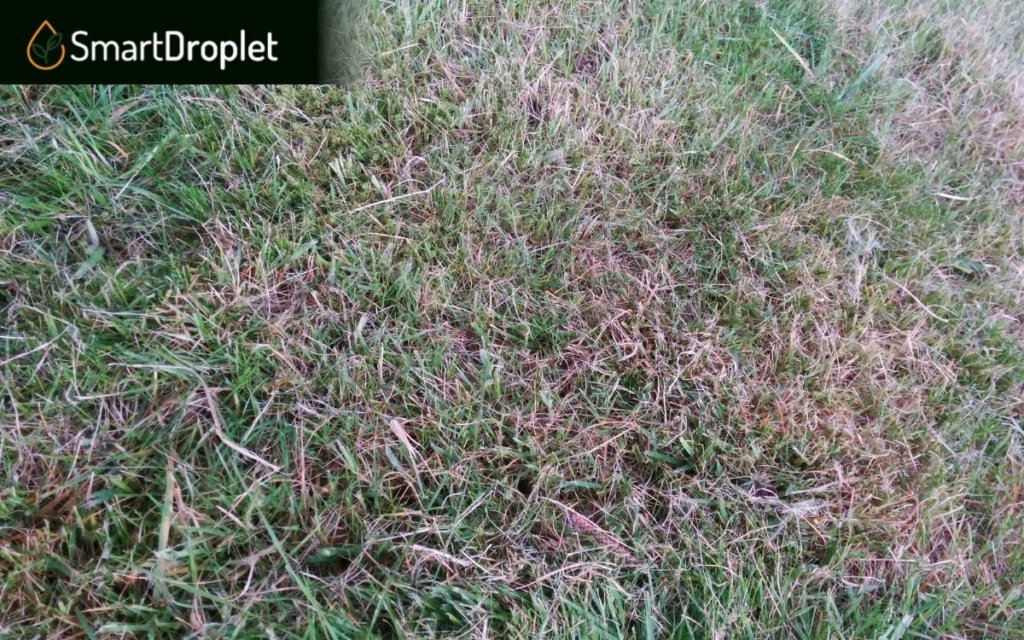
As the mottling progresses, the leaves grow weaker until the weeds take over them completely. SAD-infected lawns will still respond to fertilizers, but it won’t get rid of the mottling.
If you find that your lawn grass is not showing any progress after a significant period, it’s reasonable to diagnose your lawn.
Usually, early symptoms are not easily spotted and can last for years.
How Is Sad Transmitted? How Can It Be Controlled?
SAD is transmitted through the equipment. For instance, a lawnmower (or other tools) that worked on a SAD-infected lawn unknowingly transferred to a healthy lawn without proper cleaning.
Unfortunately, there are no chemicals or herbicides that can cure SAD. If your lawn is infected, the best way is to control the situation and stop it from spreading through healthy areas.
One way to control is by cleaning your equipment thoroughly after every use. See to it that you avoid spreading the virus from one area to another.
You can also plug in grass varieties that are resistant to the SAD virus. As this grows, it will start to overcrowd the diseased ones.
Are Plugs Better Than Sods?
The key difference between the two is the rate of growth and price.
Plugs grow slower, while sods are more instant. And it follows that sods are also more expensive, given the convenience it brings.
It’s best for emergency cases or if you don’t have the time and patience to go through the slow process.
On the other hand, plugs require more patience and care, but it’s a lot more cost-effective. If your lawn situation is not as urgent, you may find plugs to be the more practical choice.

